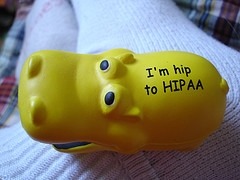This is a question that comes up frequently in trauma performance improvement programs. Several of the performance improvement (PI) audit filters typically used at trauma centers include a time parameter. Some of these include:
- Craniotomy > 4 hrs
- Laparotomy > 4 hrs
- OR for open fracture > 8 hrs (although this is now outdated)
- OR for compartment syndrome > 2 hrs
The question that needs to be asked is: 2 or 4 or 8 hours after what?
There are several possible points at which to start the clock:
- Time of the scene of the traumatic event
- Recognition at an outside hospital (for referred patients)
- Arrival in your ED
- When the diagnosis is made in your ED
- When the decision to operate occurs
The answer is certainly open to interpretation.
Here is my opinion on it:
The purpose of a PI filter is to measure system performance. There are a myriad of system problems that can delay taking a patient to the OR. These include care delays in the ED, delays in getting or interpreting diagnostic tests, delays in contact or response for consultants, delays in diagnosis, delays in OR scheduling or availability, and more. Does it make sense to limit the evaluation of your system by setting one of the later decision points as your start time?
Bottom line: I recommend starting the audit filter clock at the time of patient arrival in your ED. This enables the PI program to evaluate every system in your hospital that can possibly enable or impede your patient’s progress to the OR. However, if the issue was recognized at an outside hospital, scrutiny of their processes also needs to occur. Their trauma PI coordinator needs to know so they can make sure the transfer to definitive care occurred as quickly as possible.


